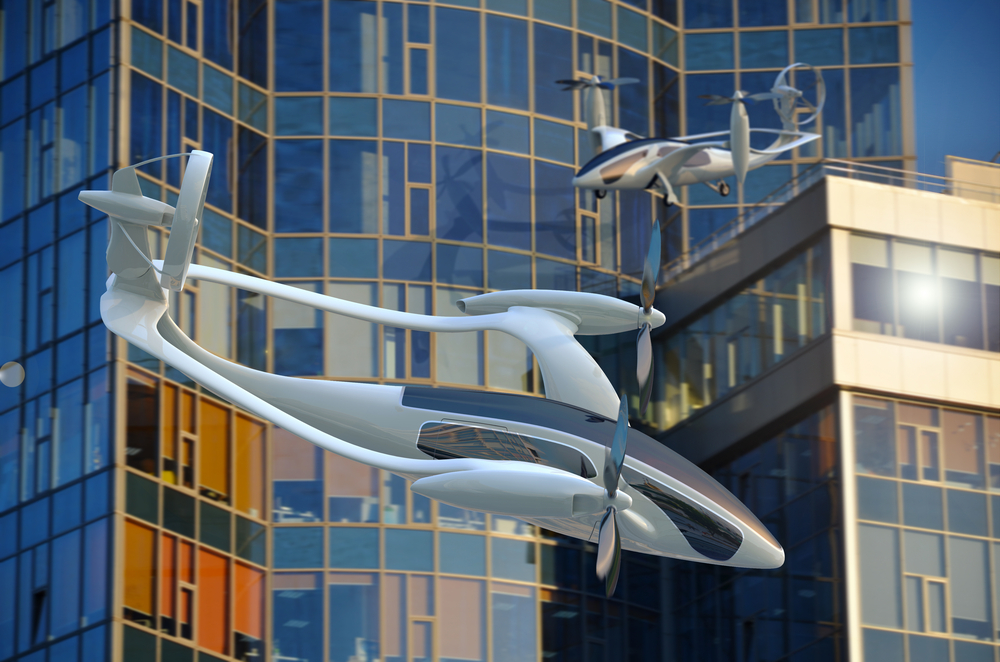
US aviation trade associations have provided concerned feedback to the US Federal Aviation Administration on a range of issues arising from the agency’s proposed Special Federal Aviation Regulations (SFAR) on “Integration of Powered-Lift: Pilot Certification and Operations.” Deadlines for responses was August 14, 2023.
According to the Vertical Flight Society:
We find that the proposed SFAR as written would actually stymie the initial fielding of AAM vehicles and overlook performance-based approaches that would be safer than the prescribed solutions, particularly in the following areas.
- Pilot Certification – The SFAR would mandate that pilots have an additional powered-lift category rating, rather than allowing helicopter and airplane pilots to add a type rating to their existing certificate, in contradiction to the International Standards and Recommended Practices of the International Civil Aviation Organization (ICAO), which the SFAR purports to follow. Specifically, VFS urges the FAA to adopt a practical pathway for pilot qualification and operations, including, to the maximum extent practicable, alignment of powered-lift pilot qualification pathways with section 2.1.1.4 of ICAO’s Annex 1, as well as the recommendations contained in document 10103 of the International Civil Aviation Organization for powered-lift operations.
- Dual-Control Trainer – The SFAR would require 25 hours of training on a type-certificated, dual-control, powered-lift aircraft — none of which currently exists, nor is there any dual-control eVTOL aircraft known to be in the powered lift certification process. Training pilots on high-fidelity simulators to add type-model certification training, in addition to an existing airplane pilot certificate, would be a much safer and efficient means to maximize pilot training and safety. As published, the proposed SFAR penalizes manufacturers who have incorporated highly augmented flight controls by proposing only one pathway for instruction training on a type-certificated, dual-control, powered-lift aircraft. To allow powered-lift pilot certification, a company building a single-pilot aircraft would first have to develop and certificate a new dual-control variant — or find a totally different powered-lift aircraft model with dual-controls (such as the AW609) that has already received as type certificate — to train pilots. In either case, the controls and handling qualities would doubtlessly be different to the operational aircraft, potentially providing a less safe training outcome….
- Simulator Training As noted in the response provided by GAMA: The “SFAR mandates the publication of powered-lift flight simulation training device (FSTD) qualification performance standards (QPS) in the Federal Register for public notice and comment, leading to significant timeline implications due to the nature of the rulemaking process. This could delay the critical path to entry-into-service beyond the initial certification of the first powered-lift aircraft, which directly contradicts the intended function of the SFAR. The SFAR inappropriately excludes deviation authorities as is currently used in FSTD qualification.” The SFAR as proposed is overly prescriptive and does not allow the FAA to account for emerging technology advancements in FSTDs…
- addition, the FAA should grant interim approval to simulators so AAM aircraft developers can begin training. Fuel Reserves Powered-lift aircraft, like helicopters, have the ability to land nearly anywhere in case of emergency. In addition, charge status monitors on AAM batteries are arguably more precise and accurate than helicopter fuel gauges that are in widespread use. Thus, the prescriptive solution for 30 minutes of “fuel reserves” for powered-lift aircraft flying in visual flight rules (VFR) based on conventional takeoff and landing aircraft vs. the 20-minute reserves for helicopters would be over-regulation, without a reasonable safety case. Similarly, 45 minutes of reserves for flying in instrument flight rules (IFR) conditions like airplanes (versus 30-minute reserves for helicopters), is also overly restrictive well beyond any reasonable safety margin.
Meanwhile, the National Business Aviation Association (NBAA) said:
Unfortunately, this NPRM does not empower the development of powered-lift aircraft with the potential described by the GAO. The proposal for airman qualification creates a barrier for most AAM aircraft manufacturers to enter the U.S. market and the proposed operations rules create an uneven playing field for powered-lift aircraft, failing to take advantage of the many benefits provided by vertical takeoff and landing capabilities.
Our primary concerns include:
- Misalignment with ICAO for airman certification, which ○ Creates unnecessary financial burden for many powered-lift OEMs and operators ○ Establishes impossible mandates for powered-lift with single controls ○ Unnecessarily increases costs for training and qualifying initial cadres ○ Creates a competitive disadvantage for part 141 and 142 training providers
- Failure to ensure timely approval or interim approval of simulator qualifications
- Misalignment with ICAO operational rules guidance, which does not allow for powered-lift to utilize the full capabilities of the aircraft; creates international disharmonization
- Incomplete Regulatory Impact Analysis (RIA) cost data
Finally, the General Aviation Manufacturers Association (GAMA) said:
GAMA members have identified several issues that must be addressed for an effective SFAR deployment, aligned with the rulemaking objective to safely certify initial powered-lift pilots and establish temporary operating rules. The SFAR framework will enable the FAA to gather additional information and determine the most appropriate permanent rulemaking path for these aircraft. These issues are summarized briefly in this cover letter, and they are examined in detail along with additional specific comments and recommendations in the pages that follow. Consistent with GAMA’s July 2022 consensus recommendations to DOT/FAA RIN 2120-AL72, we strongly urge the FAA to revise the proposed SFAR such that:
A powered-lift type rating is added to an existing airplane or helicopter category pilot certificate. This aligns with the path to pilot qualification for powered-lift aircraft operations under ICAO Annex 1, 2.1.1.4 2. Apply appropriate operating rules based on the performance characteristics of each aircraft type as demonstrated during type certification. This aligns with the performance-based approach to the framework for powered-lift aircraft operations in ICAO Doc. 10103 “Guidance on the Implementation of ICAO Standards and Recommended Practices for Tiltrotors” which primarily applies rotorcraft rules to powered-lift operations except in very specific circumstances where airplane rules are applied.
For more information
https://vtol.org/news/vfs-stakeholders-respond-to-faa-powered-lift-sfar/utm_source/Electric%20VTOL%20News/utm_campaign/540dcef2b9-eVTOL%20eNews,%20Sept%2029,%202017_COPY_01/utm_medium/email/utm_term/0_5d82db6e49-540dcef2b9-50818449/utm_source/Electric%20VTOL%20News/utm_campaign/540dcef2b9-eVTOL%20eNews,%20Sept%2029,%202017_COPY_01/utm_medium/email/utm_term/0_5d82db6e49-540dcef2b9-50818449
(Image: Shutterstock)


